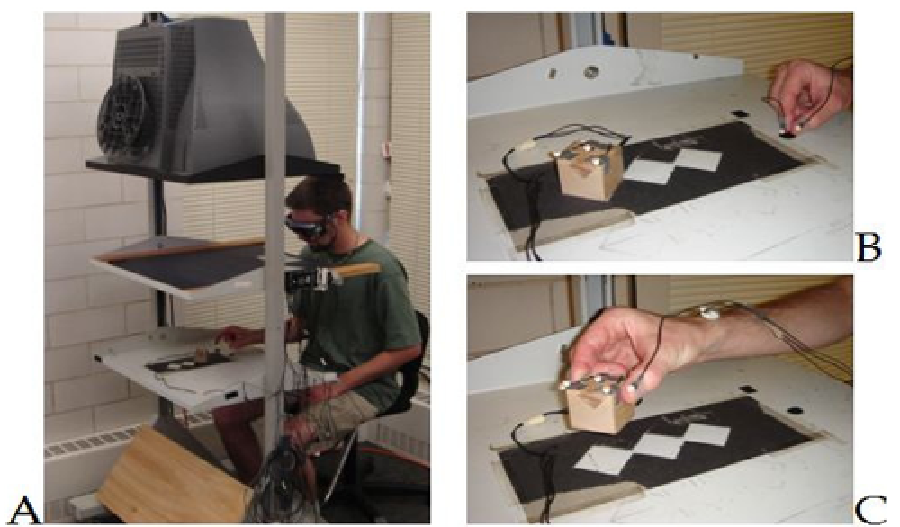Environmental Engineering Reference
In-Depth Information
Fig. 1. Wisconsin virtual environment (WiscVE). Panel A shows the apparatus with
downward facing monitor projecting to the mirror. Images are then reflected up to the user
wearing stereoscopic LCD shutter goggles, and thus the images appear at the level of the
actual work surface below. Panels B and C demonstrate a reach to grasp task commonly
utilized in this environment. The hand and physical cube are instrumented with light emitting
diodes (LEDs) that are tracked by the VisualEyez (PTI Phoenix, Inc) system, not shown.
This type of interface gives investigators complete control over the three-dimensional visual
scene (important in generalizeability to natural environments), and makes for maximal use
of the naturalness, dexterity and adaptability of the human hand for the control of computer
mediated tasks (Sturman & Zeltzer, 1993). The use of such a tangible user interface removes
many of the implicit difficulties encountered with standard computer input devices due to
natural aging processes (Smith et al., 1999). The exploitation of these abilities in computer-
generated environments is believed to lead to better overall performance and increased
richness of interaction for a variety of applications (Hendrix & Barfield, 1996; Ishii & Ullmer,
1997; Slater, Usoh, & Steed, 1995). Furthermore, this type of direct-manipulation
environment capitalizes on the user's pre-existing abilities and expectations, as the human
hand provides the most familiar means of interacting with one's environment (Schmidt &
Lee, 1999; Schneiderman, 1983). Such an environment is suitable for applications in
simulation, gaming/entertainment, training, visualization of complex data structures,
rehabilitation and learning (measurement and presentation of data regarding movement
disorders). This allows for ease of translation of our data to marketable applications.
The VE provides a head-coupled, stereoscopic experience to a single user, allowing the user
to grasp and manipulate augmented objects. The system is configured as follows (Figure 1):
3-D motion information (e.g. movement of the subject's hand, head and physical objects
within the environment) is monitored by a VisualEyez (PTI Phoenix, Inc.) motion

